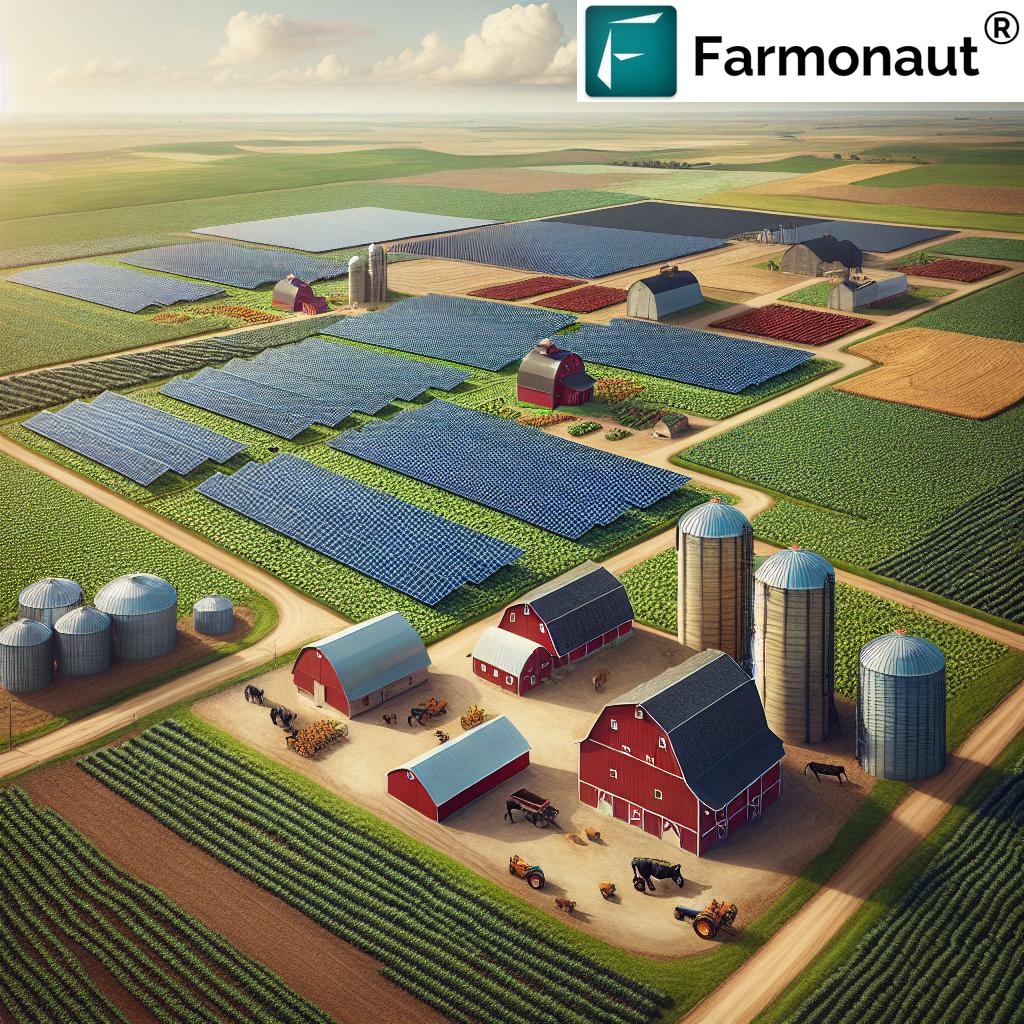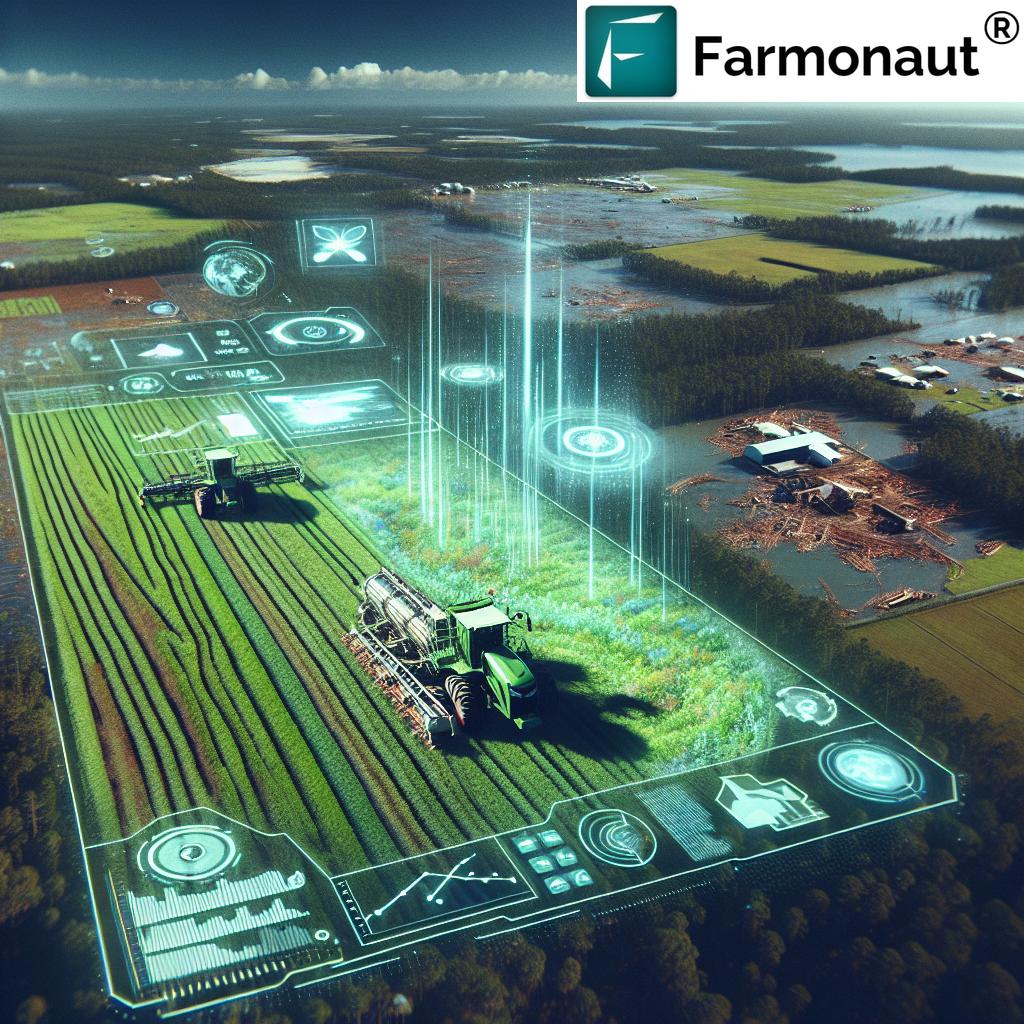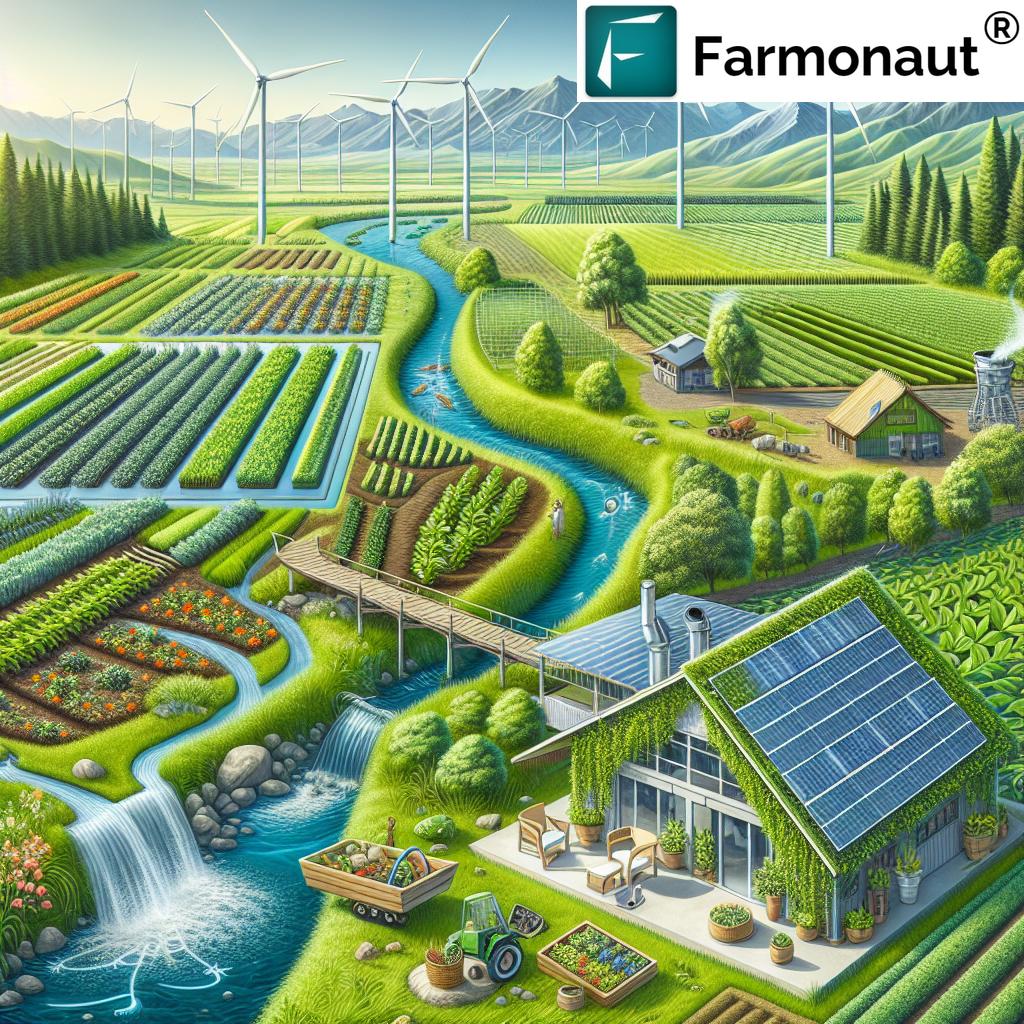North Dakota Farm Solar: 7 Powerful Incentives for 2024
“In 2024, North Dakota farmers can access up to 7 major solar incentives to boost sustainable agriculture.”
Introduction
North Dakota, long recognized for its leadership in wind energy, has recently become a new frontier for solar adoption within its agricultural sector. Solar energy North Dakota is transforming how farmers, ranchers, and rural communities operate, incorporating renewable solutions to increase sustainability, reduce operational costs, and achieve environmental goals. This broad shift is powered by substantial financial incentives, progressive policies, and pilot projects that fit the unique needs of North Dakota’s producers and businesses.
As more solar panel installations rise across the state’s farms, the suite of agricultural solar incentives—from property tax exemption solar to net metering for agriculture and grants—is making solar power for farmers more accessible than ever before.
In this comprehensive guide, we’ll unravel the seven most powerful incentives for adopting solar energy in North Dakota agriculture in 2024. We’ll also explore technological innovations (like agrivoltaics in North Dakota), community solar programs North Dakota, and the pivotal role of tools (including what we at Farmonaut offer) in supporting sustainable farm management.
Solar Energy North Dakota: Transforming Agriculture
With only 0.47 MW of installed solar capacity—the lowest among U.S. states (source)—solar deployment in North Dakota lags behind. However, this is rapidly shifting as favorable policies, declining solar panel installation costs, and ample farm acreage intersect to provide unmatched opportunity.
- Rural energy projects are diversifying how electricity is produced and consumed on farms.
- Community solar programs North Dakota model enables farmers with unsuitable sites for panels to still reap the benefits as subscribers or stakeholders in shared arrays.
- Agrivoltaics in North Dakota—the union of agriculture and photovoltaic panels—is drawing research attention for its potential to boost land efficiency and supplement income.
Renewable energy projects North Dakota are projected to flourish as more producers recognize the combined value of economic savings, energy independence, and reduced carbon footprints.
Why Solar Energy Makes Sense for North Dakota Farmers
Key Advantages for the Agricultural Sector
Integrating solar power for farmers and ranchers directly addresses many of the operational and environmental challenges facing the industry:
- Reduced Operational Costs: Generate your own electricity and stabilize long-term energy expenses.
- Sustainability Goals: Meeting state and national carbon reduction targets while maintaining a sustainable farm image for consumers and markets.
- Energy Independence: Farms gain resilience against utility rate fluctuations and potential grid disruptions.
- Maximized Land Use: With agrivoltaics, producers can harvest both electricity and crops, essentially “double-cropping” the sun.
- Support and Incentives: The growing list of federal, state, and local programs offset initial investments and operational risk.
For North Dakota’s large landowners, livestock operations, and crop producers, the case for solar adoption has never been stronger due to rising energy loads from irrigation, storage, and value-added processing.
Want to integrate satellite imagery and weather data into your agri-business or for independent research? Check out our API solution and detailed API developer docs to bring precision insights to any custom platform.
The 7 Powerful Solar Incentives for North Dakota Farmers in 2024
The following seven incentives form the bedrock of agricultural solar adoption in North Dakota for 2024:
“North Dakota’s net metering policy allows farms to offset up to 100% of their annual electricity use with solar power.”
1. Property Tax Exemption for Solar PV Installations
One of the most substantial incentives for agricultural producers is the property tax exemption solar. This state-level exemption ensures that any increase in property value resulting from the installation of solar photovoltaic (PV) systems is exempt from local property taxes for the first five years (source).
- Applies to both farm-owned and leased property.
- Directly reduces the financial burden for those investing in on-farm solar energy systems.
- Designed for installations under 100 kW (with specific local requirements possible).
This incentive means that for up to five years after installation, you pay no additional property taxes on the added value the solar installation brings to your farm, lowering the cost of ownership.
Example: If a North Dakota farmer installs a 50 kW solar PV system, the increase in the farm’s property value will not increase taxes for the next five years—helping retain operating capital and improving return on investment.
2. Net Metering for Agricultural Solar in North Dakota
Net metering for agriculture allows farms to connect renewable energy systems to the local utility grid (source). This mechanism credits the agricultural producer for excess electricity generated and fed back into the grid during periods of low on-site demand.
- Eligible Systems: Up to 100 kW in capacity (often sufficient for most farm needs).
- Agricultural producers: Offset up to 100% of their annual electricity use—turning the grid into a free storage system for surplus energy.
- Timing: Credits roll over month to month, often for a period of 12 months.
Key benefit: Net metering reduces the effective solar panel installation costs and helps stabilize farm operating budgets—especially for operations with intense seasonal variations in power demand.
3. Federal Investment Tax Credit (ITC) for Farm Solar Solutions
The Federal Investment Tax Credit (ITC) is a nationally available incentive that provides a 30% tax credit on the total installation costs of solar PV systems (source).
- Significantly drops the upfront investment required for farms and ranchers.
- Can be paired with other state, local, or USDA incentives.
- Unused portions can often be rolled forward for up to five years (consult a tax advisor for details).
Illustration: If your solar system has a total installed cost of $80,000, you can claim a $24,000 federal tax credit for the year of installation.
4. USDA Renewable Energy Grants and REAP for North Dakota
The USDA Rural Energy for America Program (REAP) provides grants and loan guarantees for agricultural producers and rural small businesses (source).
- Grants: Cover up to 50% of eligible costs for energy efficiency or renewable energy projects (solar PV installations included).
- Loan guarantees: For up to 75% of total project costs.
- In 2021, the USDA invested nearly $400,000 in these renewable energy projects North Dakota, directly supporting agricultural improvements and energy efficiency.
- Applicants must be in “rural” areas as defined by the USDA and meet certain income or business criteria.
To apply: Producers can submit proposals for grants, loans, or both—expanding financing options as rural America works toward a sustainable future.
5. Community Solar Programs in North Dakota
While not as widespread as in some other states, community solar programs North Dakota are gaining traction—especially in rural and agricultural areas.
- Casselton: Local landowners and residents can participate in shared solar farms ranging from 2–5 MW (source).
- Benefits: No rooftop or large land requirement—farmers can subscribe as “off-takers” or even lease land for the projects.
- Credits earned can help offset electric bills, further reducing operational costs.
How it works: Community solar enables many farms and households to own a piece of a larger array, sharing both the costs and the benefits—ideal for those who cannot install solar directly or wish to diversify.
6. Agrivoltaics in North Dakota: Solar Meets Agriculture
Though still emerging in North Dakota, agrivoltaics—the practice of installing solar panels above crops or grazing areas—is demonstrating clear benefits for resourceful agriculture (source).
- Better land-use efficiency—producing both crops and electricity from the same acreage.
- Potential to moderate temperatures for certain shade-tolerant crops, helping during North Dakota’s increasingly variable climate.
- New income stream by leasing above-field space for solar panels, all without abandoning traditional agriculture.
- Qualifies for many incentives, including USDA REAP and federal credits.
Did you know? Agrivoltaic pilot projects are being tested throughout the U.S.—and as the case for dual-use land solidifies, North Dakota farms will likely see increasing opportunities.
Optimize Your Farm’s Carbon Impact
For operators looking to track—and even minimize—their carbon footprint while leveraging on-farm solar, Farmonaut’s carbon foot-printing solution delivers actionable, real-time tracking to support climate-smart agriculture.
7. Additional State and Local Support Programs
Several local utilities and cooperatives in North Dakota introduce further support for ag-focused solar projects:
- Rebates: Certain utility providers offer upfront rebates per installed watt of PV.
- Flexible Interconnection Programs: Provide streamlined approvals for qualifying ag-based solar installations.
- Education and Technical Assistance: Often available through North Dakota State University Extension, providing resources for feasibility and grant application prep.
Always check with your electricity provider and local government to discover the latest financial support programs or timely grant rounds.
Traceability Builds Brand Trust
Our traceability solution allows producers, packers, and brands to harness blockchain for full supply chain transparency—from field to store. Get ahead of compliance and market demands by demonstrating sustainable sourcing.
Summary of Solar Incentives for North Dakota Farmers (2024)
| Incentive Name | Type | Estimated Value/Benefit | Eligibility Criteria | Application Deadline |
|---|---|---|---|---|
| Property Tax Exemption Solar | State Tax Exemption | 100% of value exempt for 5 years | Solar PV added to farm property; size limits may apply | Rolling (within 5 years of installation) |
| Net Metering for Agriculture | Utility Bill Credit | Credits for 100% of annual use (up to 100 kW systems) | Farms/rural businesses, < 100 kW PV, utility approval | Continuous |
| Federal Investment Tax Credit (ITC) | Federal Tax Credit | 30% of total solar installation cost | Business or agricultural taxpayers; U.S. property | Dec 31, 2032 (then phases down) |
| USDA REAP Grants & Loans | Grant & Loan Guarantee | Up to 50% grant; up to 75% loan guarantee | Rural farms & small businesses; USDA-defined eligibility | Periodic rounds (annually); USDA deadlines |
| Community Solar Programs ND | Shared Ownership/Credit | Lower buy-in, bill credit or lease income | ND residents, landowners, small businesses | Program-dependent |
| Agrivoltaics Project Funding | Grant, Tax Credit | Stacked benefits (REAP, ITC, local) | Farms with dual-use land, research/extension | Depends on program |
| State/Local Utility Incentives | Rebate/Tech Assistance | Upfront $/W rebate, interconnect cost savings | Utility members, ag operations | Varies by utility |
Anticipating Challenges in Solar Adoption
Despite powerful incentives, North Dakota farmers and ranchers considering solar should be aware of several challenges:
- Upfront Costs: Even with tax credits and grants, out-of-pocket expenses at the time of installation can be significant—though financing options (including USDA loan guarantees) help lessen the impact.
- Interconnection & Grid Access: Connecting your array to the local utility grid sometimes involves complex paperwork and timelines. Early coordination with your provider streamlines this step.
- Regulatory Hurdles: Zoning laws or permitting requirements can delay solar projects, especially in more urbanized parts of North Dakota or for very large-scale installations.
- Geographic & Weather Limitations: While solar works well even on cloudy days, panel orientation, snow coverage, and shading can affect efficiency, and system design must account for these factors.
Careful planning and consultation—plus leveraging technical assistance from state and local agencies—can ensure your solar investment delivers robust returns.
Need better resource allocation for your solar/hybrid farm fleet or on-site logistics?
Explore our fleet and resource management solution to minimize downtime, reduce fuel use, and maximize operational efficiency—whether managing tractors or integrating with solar-powered irrigation systems.
The Road Ahead for North Dakota Farmers: Opportunities & Future Outlook
North Dakota’s agricultural sector is uniquely positioned to lead the next wave of renewable energy projects thanks to:
- Vast farm acreage (ideal for scale and siting of PV arrays and community solar farms)
- Ongoing technological innovations (dropping solar installation costs, improved efficiency, new storage and grid management solutions)
- Growing demand—from local consumers and global buyers alike—for traceable and low-carbon agricultural products
As North Dakota’s energy policy infrastructure expands, we can expect:
- More robust policies—potential increases in allowable system sizes and streamlined interconnection
- Increased funding: Federal and state-level programs may see expanded budget allocations, especially for climate-friendly agriculture
- Advanced guidance and analytics: Precision tools, such as those we offer at Farmonaut, deliver real-time data for efficiency and yield optimizations, helping to offset energy costs further
For large farms and agribusinesses in North Dakota
Our agro-admin app for large scale farm management is built to provide detailed field analytics, resource tracking, and satellite-based advisory for maximum productivity.
Looking for easier crop loan and insurance verification?
With Farmonaut’s satellite-based verification tools, you can provide lenders and insurers the assurances needed for faster, risk-mitigated financing.
How Farmonaut Supports Sustainable Farming in North Dakota
As North Dakota’s farms break new ground in solar adoption, the role of precision management and technology in maximizing sustainability, profitability, and climate resilience is increasingly vital.
We at Farmonaut provide advanced, satellite-based farm management solutions for producers, agribusinesses, and government agencies alike—including those leading the charge in solar-powered agriculture:
- Satellite Monitoring: Instant access to real-time field data—like NDVI crop health, soil moisture, and input requirements.
- AI-Powered Advisory: Automated, context-specific advice on irrigation and fertilization—maximizing resources and supporting farms shifting to solar-powered pumps or machinery.
- Blockchain Traceability: Transparent product tracking from field to end-user for operations integrating sustainable energy or certified carbon reductions.
- Fleet & Resource Management: Streamlined operation of farm equipment, essential for large solar installations or complex multi-site management.
- Carbon Footprint Tracking: Quantify and reduce farm emissions from both traditional and renewable-powered operations.
Discover our flexible, affordable, and scalable subscription packages—engineered to make precision agriculture and energy optimization accessible to every North Dakota farmer.
Frequently Asked Questions: North Dakota Farm Solar Incentives
1. Is solar worth it for North Dakota farmers given the relatively low sunlight?
Yes! Despite North Dakota’s northern latitude, modern solar panel technologies are highly efficient—even in less-than-optimal conditions. With strong financial incentives and declining equipment costs, most farm operations can achieve attractive paybacks.
2. Can I access both state and federal incentives for my solar project?
Absolutely. Most North Dakota farms pairing the federal ITC with the state property tax exemption and net metering policies. In fact, stacking incentives can reduce the initial cost by 50–70% in some cases.
3. What if I don’t have suitable rooftop space? Are there options for leased or community solar?
Yes. Community solar programs North Dakota allow you to buy-in or lease a share of a larger solar farm—even if your own property isn’t ideal for panels. You can also lease land to project developers for additional income.
4. How do I calculate what size system my farm needs?
Your historical annual electric use (in kilowatt-hours) is the key starting point. Most North Dakota farms benefit from 25–100 kW systems. Utility consults, installer evaluations, or resource tools—including apps like Farmonaut—help analyze site-specific requirements.
5. How long does it take to break even on a solar installation in North Dakota?
Typical payback is between 5–9 years using a blend of credits, grant funding, and energy bill savings—though specifics depend on system size, site, and available incentives.
6. Can I use solar to power irrigation, storage, or grain handling?
Yes—these loads are some of the most common applications, and can be monitored and optimized for sustainability using tools from providers like Farmonaut for real-time efficiency tracking.
7. Where can I get help with applications or technical questions?
North Dakota State University Extension and various solar installers offer application assistance. For data-driven site analysis and resource tracking, try Farmonaut’s suite of precision ag solutions or our mobile/web apps.
Conclusion
The landscape of solar energy North Dakota is evolving: today’s incentives, programs, and cutting-edge practices offer a compelling pathway for agricultural businesses to excel. Through a smart mix of net metering for agriculture, property tax exemption solar, USDA renewable energy grants, and community-driven programs, farms can upgrade their operations for both profit and sustainability.
Crucially, integrating data-driven technology—like what we offer at Farmonaut—amplifies the benefits of your solar investment, letting you track every kW, verify your sustainability claims, and optimize each acre. Solar in North Dakota agriculture is not just a trend—it’s a foundational component for a resilient, resource-efficient, and climate-forward future.
Ready to get started? Join our growing community of innovative producers—discover the Farmonaut App or API solutions today and make your transition to renewable-powered farming smoother, smarter, and more profitable.


















